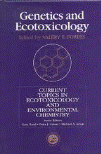Papers in the Biological Sciences
Date of this Version
2008
Abstract
[Oehlmann et al.]: Recently, we had the opportunity to read two articles in volume 66 of Ecotoxicology and Environmental Safety. Forbes et al. (2007a, , 2007b) declare “to explore the reproducibility of prior work” showing that bisphenol A (BPA) induces superfeminization in the freshwater snail Marisa cornuarietis (Oehlmann et al., 2000, 2006; Schulte- Oehlmann et al., 2001). Based on the outcome of a toxicity test with the same species, the authors conclude that their results “do not support previous claims of enhanced reproduction in M. cornuarietis in response to exposure to BPA.” We take issue with the declaration of exploring the reproducibility of our challenged work and the validity of the conclusions made by Forbes et al. (2007a, 2007b). Furthermore, we feel the toxicity test is flawed because its experimental design and the selected exposure conditions result in an irresponsiveness of test animals to the tested compound.
...
[Forbes et al.]:We thank the editor for giving us the opportunity to respond to Oehlmann et al.’s comments (Oehlmann et al., 2008) on our papers (Forbes et al., 2007a,b). In response to the criticisms of our studies we would first like to emphasize that it was not our aim to exactly repeat the experiments of Oehlmann and colleagues, but rather to produce robust and reproducible results that were statistically valid and that therefore could be used in the risk assessment of bisphenol A (BPA).
We are disturbed by the highly speculative suggestion by Oehlmann et al. that we may have studied a different ‘cryptic’ species of Marisa cornuarietis, as there is no evidence to support such suggestion. Furthermore, the snails used in our studies were collected from a documented pristine field site and identified to species by Dr. Sharon File-Emperador from University of Puerto Rico, a recognized snail expert. They were reared for a known number of generations under tightly controlled and documented conditions. In contrast, the snails used in Oehlmann et al.’s studies (e.g., Oehlmann et al., 2006) came from the Dusseldorf Zoo (original site of field collection not indicated) and were periodically supplemented with snails from Florida (location not indicated). There is likewise very little information in the published studies about the culture and husbandry conditions of Oehlmann et al.’s snails, whereas a major portion of our research aimed to identify appropriate husbandry and culture conditions for M. cornuarietis. It is on the basis of such detailed study that our toxicity tests with BPA were conducted.


Comments
Published in Ecotoxicology and Environmental Safety 69:3 (March 2008), pp. 577–581; doi: 10.1016/j.ecoenv.2007.04.017 & 10.1016/j.ecoenv.2007.11.021 Copyright © 2008 Elsevier Inc. Used by permission.